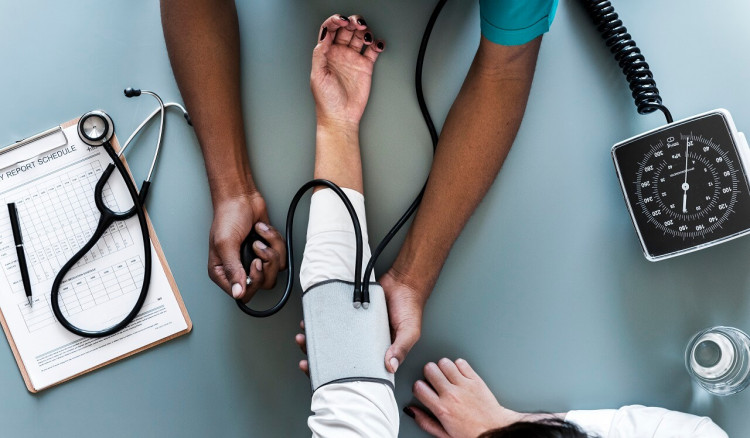
How to Take Blood Pressure
Circulating blood presses against the walls of the blood vessels with a force that fluctuates with every heartbeat. This force is called or known as blood pressure.
The pressure is greatest during the Systole, when the heart contracts and forces blood into the arteries of the body. This maximum pressure is known as systolic pressure.
During the Diastole, when the heart muscle relaxes, the pressure drops to a minimum, which is called diastolic pressure.
Blood pressure varies from person to person, as well as from time to time in the same person. It is influenced by general health, heredity, age, weight, activity and emotional state. The blood pressure gives the doctor an indication of two important factors in a person’s health: the volume of circulating blood and the elasticity of blood vessels.
For example, a rapid decline in blood pressure following severe injury warns the doctor that a person is going into Shock—a very serious condition associated with a decrease in the volume of circulating blood.
Blood pressure increases as a person grows older and the walls of the blood vessels lose their elasticity. The rate at which the heart is beating affects blood pressure; therefore, blood-pressure measurements must be taken when a person is in a relaxed, resting condition
Taking the Blood Pressure
The doctor uses a Stethoscope and a device called a Sphygmomanometer to take the blood pressure. A rubber cuff attached to the Sphygmomanometer is wrapped around the upper arm. Then air is pumped into the cuff, arresting the flow of blood in the artery of the upper arm.
Listening through the stethoscope, which is placed against the artery at the bend of the elbow, the doctor cannot hear any heartbeat because the blood flow through the artery has been stopped. Now the air pressure is slowly released. Blood begins to flow into the artery when the systolic pressure from the heart’s contraction exactly equals the pressure of the partly inflated cuff on the person’s artery.
The doctor reads and records the pressure (in millimeters of mercury) shown on the Sphygmomanometer at the moment when he first hears the thumping sound of blood entering the artery at every systole.
Then more air is released from the sleeve. The thumping stops when the artery is no longer obstructed by any outside pressure—blood is then flowing freely through the artery. The reading on the Sphygmomanometer at the moment the thumping stops gives the diastolic pressure.
Blood pressure is always recorded as two numbers; 120/80, for example, means that the systolic pressure is 120 and the diastolic pressure, 80.
What Blood Pressure Means
On the average, a woman has a systolic pressure as much as 10 millimeters lower than a man’s. A normal young person’s systolic pressure may range up to 140, and an older person’s up to about 170.
When someone has a systolic pressure above 160 millimeters, he is usually considered to have high blood pressure or Hypertension. If the systolic pressure is below 90 millimeters, low blood pressure, or Hypotension, may be suspected. A diastolic pressure of 90 or 100 should be looked into.
There is no truth to the folk tradition that the systolic pressure should be “100 plus your age.” What is normal for one person may indicate high or low blood pressure in another. Moreover, people may react emotionally to having their blood pressure taken, particularly as part of a medical examination for insurance or a new job.
The result may be a reading that is not truly the ‘normal’ one. Thus, before a firm diagnosis of abnormal blood pressure can be made, the pressure must be measured on a number of different occasions and confirmation obtained by other tests, such as an examination of the blood vessels of the eye.
It is important to be aware that elevated blood pressure, or hypertension, is a symptom and not a disease. In about 10 percent of all cases, it is associated with hardening of the arteries, nervous tension, kidney disease, or other disorders.
In the remaining 90 percent, however, no disease is found. This condition is described as essential hypertension. Most persons with moderately high blood pressure are not handicapped by it, but are able to keep it under control with medical help.
Sources and References
Reader’s Digest Family Health Guide and Medical Encyclopedia
Association of Body Mass Index and Waist Circumference with High Blood Pressure in Older Adults by Wenli Zhang, Kun He et al
Diagnosis and Treatment of Orthostatic Hypotension by Wouter Wieling, Horacio Kaufmann et al
Apparent and True Resistant Hypertension: Definition, Prevalence and Outcomes by E Judd and D. A Calhoun






Share This Article: